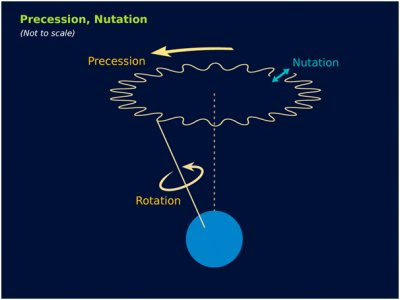James Bradley (March 1693 – 13 July 1762) was an English astronomer and served as Astronomer Royal from 1742. He was born at Sherborne, near Cheltenham in Gloucestershire. He went to Balliol College, Oxford and took degrees of BA and MA. His early observations were made at the rectory of Wanstead in Essex. Bradley was elected a fellow of the Royal Society in 1718. In 1722 Bradley measured the diameter of Venus with a large aerial telescope with an objective focal length of 212 ft (65 m). James Bradley retired because of a bad health, went to the Cotswold village of Chalford in Gloucestershire, where he died in 1762.
What were Bradley’s major contributions to astronomy?
One of the most significant discoveries of James Bradley was the aberration of light (1725-1728). It is a phenomenon in which a star or other celestial body, as viewed from the earth, appears to be slightly displaced from its true position. It occurs because the Earth is constantly moving in its orbit around the Sun and light travels through space at a finite speed (about 186,000 miles per second [300,000 km/s]). If the Earth was stationary, or if light traveled through space instantaneously, the aberration phenomenon would not exist. For example, the traces left by raindrops on the side windows of a moving automobile provide an analogy to the aberration of light. Even if the rain is coming straight down, the traces will be at an angle.
When observed from the Earth, light from the Sun or any other astronomical object shows an aberration. For the Sun, it is known that light takes about 8.3 minutes to come to the Earth. While the light is traveling, the Earth is revolving around the Sun, and so the Sun appears to move through an angle of about 20 arc seconds. Therefore, the light is actually showing where the Sun was 8.3 minutes ago. We will see the Sun in its true present position about 8.3 minutes into the future (which is how long it takes for the light to reach our eyes).
Another important discovery was the nutation of the Earth’s axis (1728-1748). It is a small cyclical motion superimposed upon the steady 26,000-year precession of the Earth's axis of rotation. It is mainly caused by the gravitational effect of the 18.6-year rotation period of the Moon's orbit. Nutation can be calculated to within arc seconds over periods of many decades. There is another disturbance of the Earth's rotation called polar motion that can be estimated only a few months ahead, because it is influenced by rapidly and unpredictably varying things such as ocean currents, wind systems, and motions in the Earth's core.
In the case of Earth, the principal sources of tidal force are the Sun and Moon, which continuously change location relative to each other and thus cause nutation in Earth's axis. The largest component of Earth's nutation has a period of 18.6 years, the same as that of the precession of the Moon's orbital nodes.
How did these link in with previous work?
Bradley's discovery of the aberration of light was made while attempting to detect stellar parallax (which is an apparent displacement or difference in the apparent position of an object viewed along two different lines of sight, and is measured by the angle or semi-angle of inclination between those two lines). The discovery of the aberration of light is sometimes told with the story of how James Bradley realized that such thing could exist: once he was in a sailing-boat on the River Thames. He noticed that when the boat turned about, a little flag at the top of the mast changed its direction, even though the wind had not changed; the only thing that had changed was the direction and speed of the boat. He worked out the consequences of supposing that the direction and speed of the earth in its orbit, combined with a consistent speed of light from the star, might cause changes of stellar position that he observed. He found that this fitted the observations well, and also gave an estimate for the speed of light, and showed that the stellar parallax, if any existed, with extremes in June and December, was far too small to measure at the precision available to Bradley. The smallness of any parallax, compared with expectations, also showed that the stars must be many times more distant from the Earth than anybody had previously believed. This discovery was great evidence that the Earth moves and it was announced in 1729.
I have not found information on the roots of nutation of the Earth’s axis, the only thing was that it was discovered by James Bradley and explained only after 20 years from the discovery.
So to sum everything up, James Bradley was a great astronomer and we would not have been able to continue works in astronomy without his help.
References:



No comments:
Post a Comment